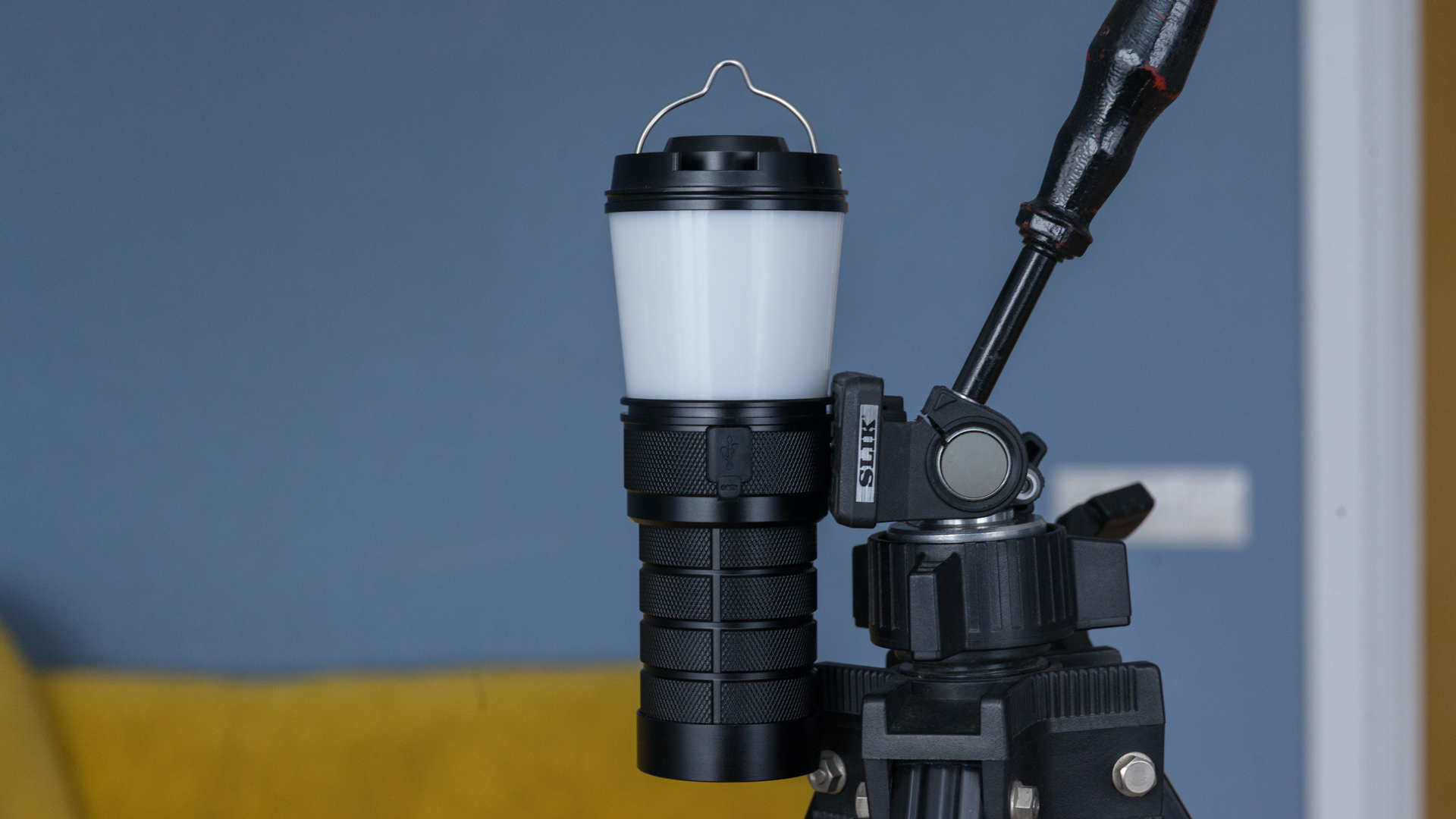After reading all your current measurements during the tint ramp, I was wondering if you also measured the brightness, because I am not sure if we even need a linear current curve during the tint ramping. At least theoretically the effiency (lm/W) of the Leds should be higher when the current is spead over more leds, which means that we should have a slight dip in the mid of the current curve, although I am not sure how noticible the effect is in this case.
Unfortunately the firmware programming “holes” om LT1 don’t work for me.
I do have the Lexel programming key, 3 pieces, purchased from Fireflies. This tool worked for Fireflies E01 and PL47G2 (I upgraded their firmware successfully more than once), however it didn’t work with Fireflies ROT66G2 and BLF LT1. ROT66G2 and LT1 have a newer design of programming “holes”, while E01 and PL47G2 have the old design — programming “pads”. The old “pads” make much better contact with the pogo-pins, so you can easily reflash as long as the pins are aimed at the pads correctly. However with the new design of “holes”, the contact cannot be made reliably.
I have spent more than 3 hours on my ROT66G2 and LT1, hundreds of times, making sure that the pogo-pins are all pushed into the “holes” each time, however AVRDUDE couldn’t even read the MCU id correctly, each time. The only reliable way to reflash the firmware for ROT66G2 or LT1 is to pull out the driver and use a programming clip directly. That involves removing the soldered wires each time, and it’s tedious.
I also sanded the tips of the pogo-pins on the programming key, slightly or heavily, and tried several times, still didn’t work.
I like both ROT66G2 and LT1, however I think the programming feature is fairly important and should have been well tested… ![]()
EDIT: I just soldered wires directly from those programming “holes” to the USBASP programmer. However it didn’t work either. So most likely those holes themselves are not working at all in the design circuit, or both my ROT66G2 and LT1 are defective units.
I can not verify your problem
I have here both lights, plugged the programming key in just a minute ago, started Atmel Studio and flashed with Attiny25 command so it gives me error wrong MCU
I have flashed several drivers without any problems with the programming key, both all vias and with only 2 align viases
The design was changed to all viases after another programming key maker said to me when all pads are viases the flash proces is more reliable
The v3.1 key has mirror problem, so the leads need to be soldered not as marked on the key, did you check that?
The main goal is to have a key with aligned Pogo pins mine is not perfect but works
Yes. And with the same key/configuration I successfully flashed PL47, PL47G2, E01, E07, so I believe the same thing should work with ROT66G2 and LT1 directly. But it didn’t work.
I even soldered wires directly from those ROT66G2 programming viases to my USBASP programmer (so no key was involved) and tried again, however that didn’t work either.
Is your ROT66G2 / LT1 unit a mass production one?
EDIT: my Lexel programming key is v3.2.
I updated the original post with a runtime test for for step level 2. I also updated the charts above for step levels 4 and 3 to more accurately reflect what the relative lumens output is at each step. The steps levels is not a linear progression, for example, step 4 is not 80% of max, step 3 is not 60% of max, etc. This is done intentionally since our eye wouldn’t perceive the change in output as linear even if it was.
I was doing some work on the PL47 G2 and ROT66 G2 last night, and it took forever to get the ROT66 G2 to flash sometimes. I’m not sure why, but it worked pretty okay a few times and then failed, and it took hundreds of tries to get it to flash again. I was sure I had bricked it somehow, even though the fuse values weren’t touched.
So I’m wondering if maybe there’s still some sort of interaction with the aux LED board like what happened with the first few iterations of the aux LED boards. On the E07 I have to physically disconnect the aux LEDs before flashing firmware.
Eventually I got the ROT66 G2 to flash again, so it’s not bricked. It seemed to respond more often when using a 3.3V setting instead of 5V… but I’m not sure if that was actually relevant.
I haven’t had this issue on a LT1, but I still don’t have a production model.
Thank you so much for doing this GreenCampFire!
I did try to disconnect the aux LED wires before flashing, but that still didn’t work either after so many times of trials…well, at least I’m not alone :weary:
Hi all, I wrote my review of the LT1 lantern here: https://greencampfire.com/blf-lt1-lantern-review/
A nice review GreenCampfire. :+1:
One small critique, the statement below could use a tweak.
The only short blinks during bat check are for a zero.
You misspelled Sofirn otherwise Great write-up!
And BLF. 
Great review! :+1: ![]() I will certainly bookmark your website and share the review with others asking about it.
I will certainly bookmark your website and share the review with others asking about it.
Thanks for the corrections sbslider, dealgrabber2002, and raccoon city, I’ve updated the review to correct the spelling mistakes and blinking behavior.
Also, the manual says the LEDs are 2700K and 5000K, not 3000K and 4000K like I originally wrote which I have updated in the review as well.
hi, guys.
i`m working on review of this gem, will compare it to CL30R.
and i faced question - what is manual and automatic memory in 5 clicks? tried to search , but couldnt find answer


IIRC
Manual : You set the level you want, set the memory to manual and after that the lantern will start with this level at each power On.
Auto : When powering On the lantern will start at the same lvl it was at last power Off.
grand mercy,
red manual several times, found nothing. strange.
btw, manual (at least the one i got from sofirn) contains lots ot copy-paste from regular Anduril UI, which dont refer to LT1 -)
English manual is here: https://drive.google.com/drive/folders/1HIFCFcBus5XRjKMfgkjAR7nH1R62qp_5
While the LT1 is on, 5H clicks (not releasing the 5th click, but hold) sets it to manual memory, or where it was last turned off. This is the default. 5C (just 5 clicks) from on sets it to auto memory, where it turns on at the level it was at when you set auto memory.
So with the drive current being 16ma on level one it appears we could reasonably assume 600 hours run time before the first stepdown?
That would make the output on level one like 6 lumens?
His measurements were close to that i was getting too when i was testing the amp loads. (with the 5-AMCs default per channel) 6 lumens average seems to be about that output on the lowest of the stepped ramp setting.